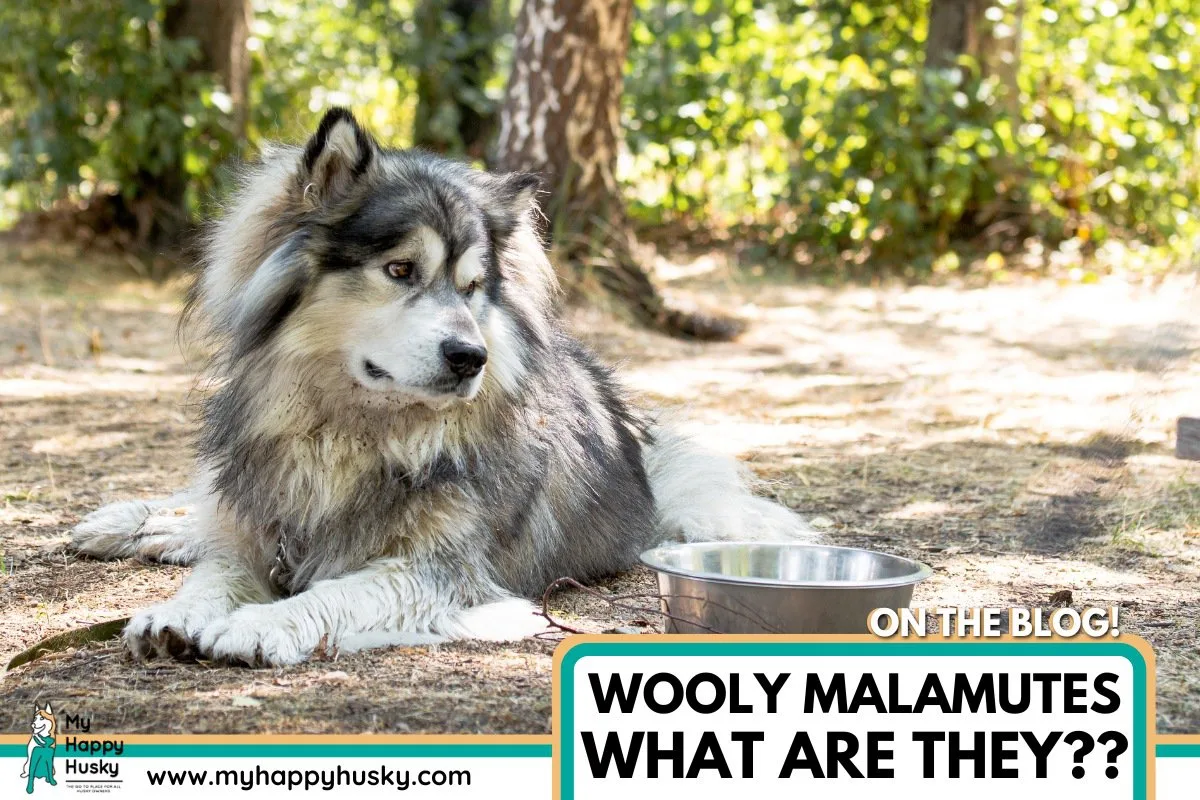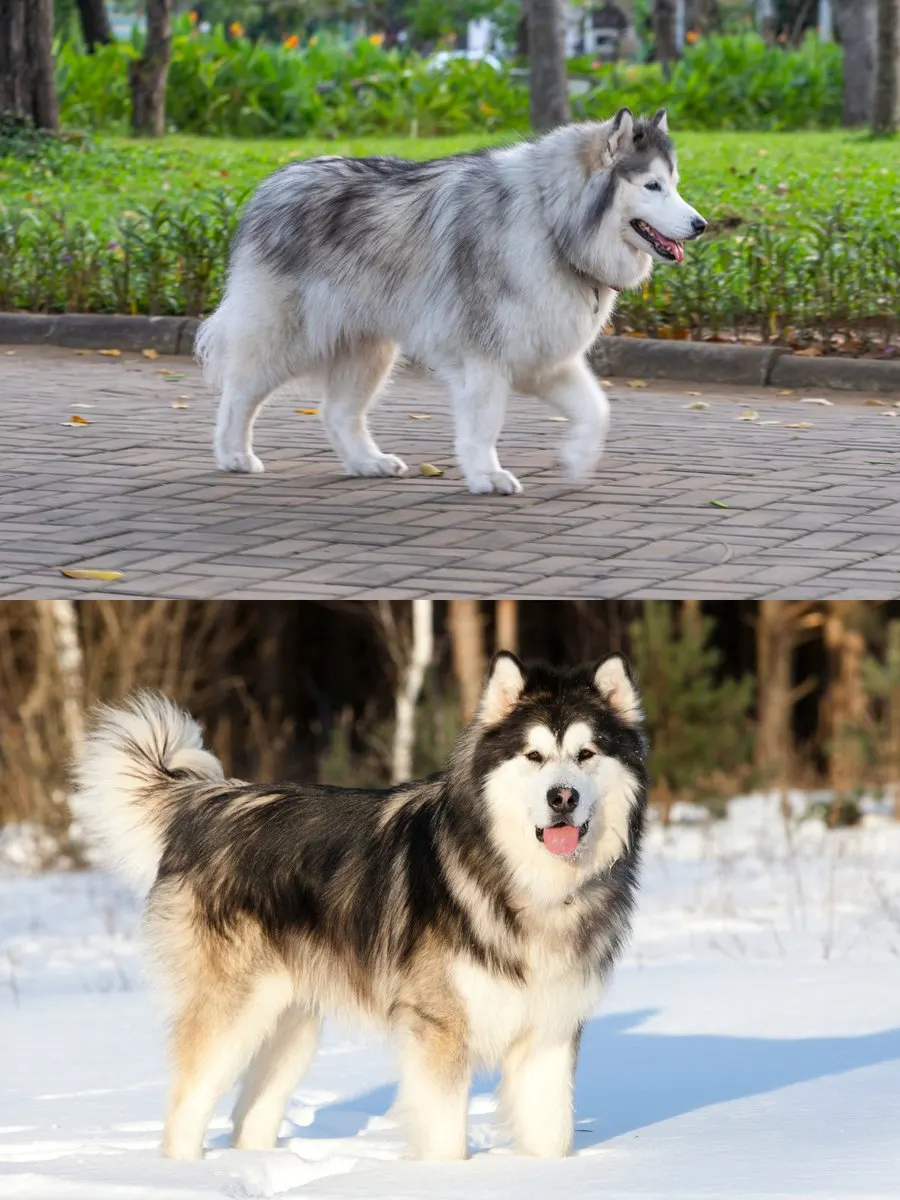If you thought the coat on an Alaskan Malamute couldn’t get any longer and thicker, you’d be wrong!
There’s a lot of talk about wooly malamutes, but not too many people truly know what they are, even malamute owners!
Are they a separate breed? how rare are they? and how do you know if you’ve got yourself a standard malamute or a wooly malamute. This article has everything you need to know.

What Is a Wooly Malamute
In a few words, a wooly Alaskan malamute is a breed variation of the standard Alaskan malamute, just with an exceptionally longer and thicker coat. This means they are not a separate breed, just a variation.
Their exceptionally long coat stands out easily and looks pretty different from the malamute’s standard coat. For better or for worse, I’ll let you decide! But I think it looks super cool!
It’s worth noting that the longer coat on the wooly malamute does not meet the breed standard laid out by the AKC for malamutes. This doesn’t mean anything bad, it just means they wouldn’t be able to compete in shows.
How Do Malamutes Get Wooly Coats?
So how is such a luscious coat even possible?
The wooly coat is caused by a recessive gene which can be passed down to offspring even by two non-wooly parents.
It all depends on genes and what the parents have. Now, if you breed a wooly malamute with a non-wooly or another wooly, of course the chances are higher for the offspring to boast wooly coats.
The thing is, many rightfully agree that selectively choosing malamutes to breed based of aesthetics isn’t fair. And while there are no health implications of breeding wooly malamutes together we have to remember that these dogs are extremely high maintenance because of their coats… And this is why many of them end up in shelters.
Owners going for the aesthetics in many cases aren’t prepared for what truly comes with such a dog.
Two photos of wooly malamutes:

How To Identify a Wooly Malamute
There is no “official” way to identify a wooly malamute, other than just by gauging how long their coat is compared to the coat of a standard malamute.
Still, despite the lack of official identification, true wooly malamutes literally look like they have a lion’s mane around their neck. The rest of their hair is extremely long, thick, and even fuzzy.
Because of this, it’s still fairly easy to pick these out of a bunch of regular-coated malamutes.
In many cases, owners may not know whether their malamute has a wooly coat until about 3 years old, as this is how long it takes to fully grow.
It’s estimated that 20-25% of the breed population of Alaskan Malamutes (1 in 4 or 5 malamutes) actually have wooly coats to varying degrees.
The longer the coat, the rarer it is to see.
Are Wooly Malamutes Bred For Colder Weather?
Many believe that malamutes with longer, thicker coats (the wooly malamute) are the ones preferred for working purposes in super cold arctic conditions. But this isn’t actually true.
⭐ The truth behind this is that the wooly malamute’s coat is extremely high maintenance and prone to matting much more than the standard malamute coat.
⭐ This causes a big problem when it comes to staying warm, as a tangled or matted coat will not effectively retain body heat.
Breeders and those who used malamutes for working purposes in extremely cold climates would have known this. And would have preferred malamutes with standard coats that were easier to maintain and better at insulating.
Grooming Need of Wooly Malamutes
The Wooly Malamute’s coat is composed of two layers:
The topcoat, which is coarse and protects the dog from harsh weather, and the undercoat, which is dense, wooly, and insulating.
Brushing ➡️
This double-layered coat requires daily brushing to keep it in good condition. Doing so will help prevent matting and tangling, which can cause serious discomfort, body temperature issues, and even skin problems if left unresolved.
Wooly malamutes are best groomed with an undercoat rake. Avoid deshedders as you don’t want to damage their outer topcoat. Undercoat rakes are gentle when removing dead hair and work wonders at detangling and preventing matting.
If you want to finish off the topcoat then a slicker brush will also do a good job. But if you had just one brush, it should be an undercoat rake.
Bathing ➡️
Unlike some other breeds, Wooly Malamutes do not need frequent bathing. Doing so can strip the coat of natural oils that keep the fur healthy and the skin moisturized. Unless your Wooly Malamute has gotten into something messy or smelly, bathing every 3-4 months is usually sufficient. Use a mild, dog-appropriate shampoo to protect the skin and coat.
Trimming ➡️
Trimming exceptionally long hair with scissors is another grooming need for a Wooly Malamute, though it isn’t needed as frequently as brushing.
Trim the fur around the paws to prevent snow or debris from becoming trapped. In addition, long hair on the paws can cause slipping on slick surfaces.
A light trim with scissors is not the same as shaving. They are completely different and we never recommend shaving a malamute!
Light trimming with scissors around troublesome areas can really prevent dirt build up in the coat and help keep your malamute cleaner for longer.
Closing thoughts
Wooly malamutes are big friendly and fluffy giants! Hopefully this article cleared up a few important questions and made it easier understanding exactly what IS and what ISN’T a wooly malamute.
Do you have a wooly malamute? If so please send in your photos so we can upload them to this page! This will help other owners even more!
Back to more malamute articles
Disclaimer
The advice given in this article is for educational purposes only and does not constitute professional advice in any context. Before making any decisions that may affect the health and/or safety of your dog, you should always consult a trained veterinarian in your local area. For the FULL disclaimer Visit HereCopyright Notice: The content produced and published on My Happy Husky is unique and original. My Happy Husky makes an active effort to search for plagiarized content using plagiarism detection software. If plagiarized content is found, action will be taken.
